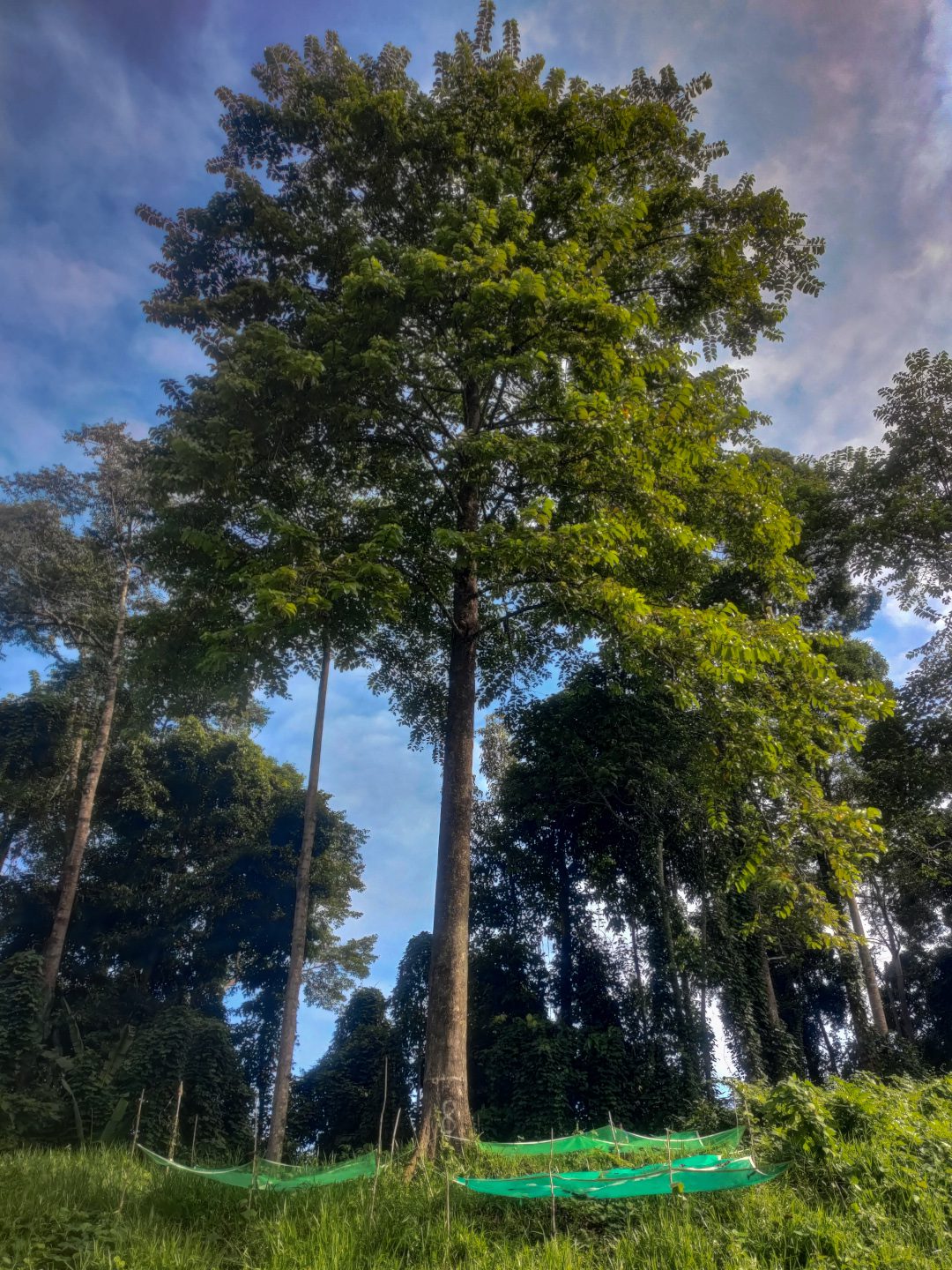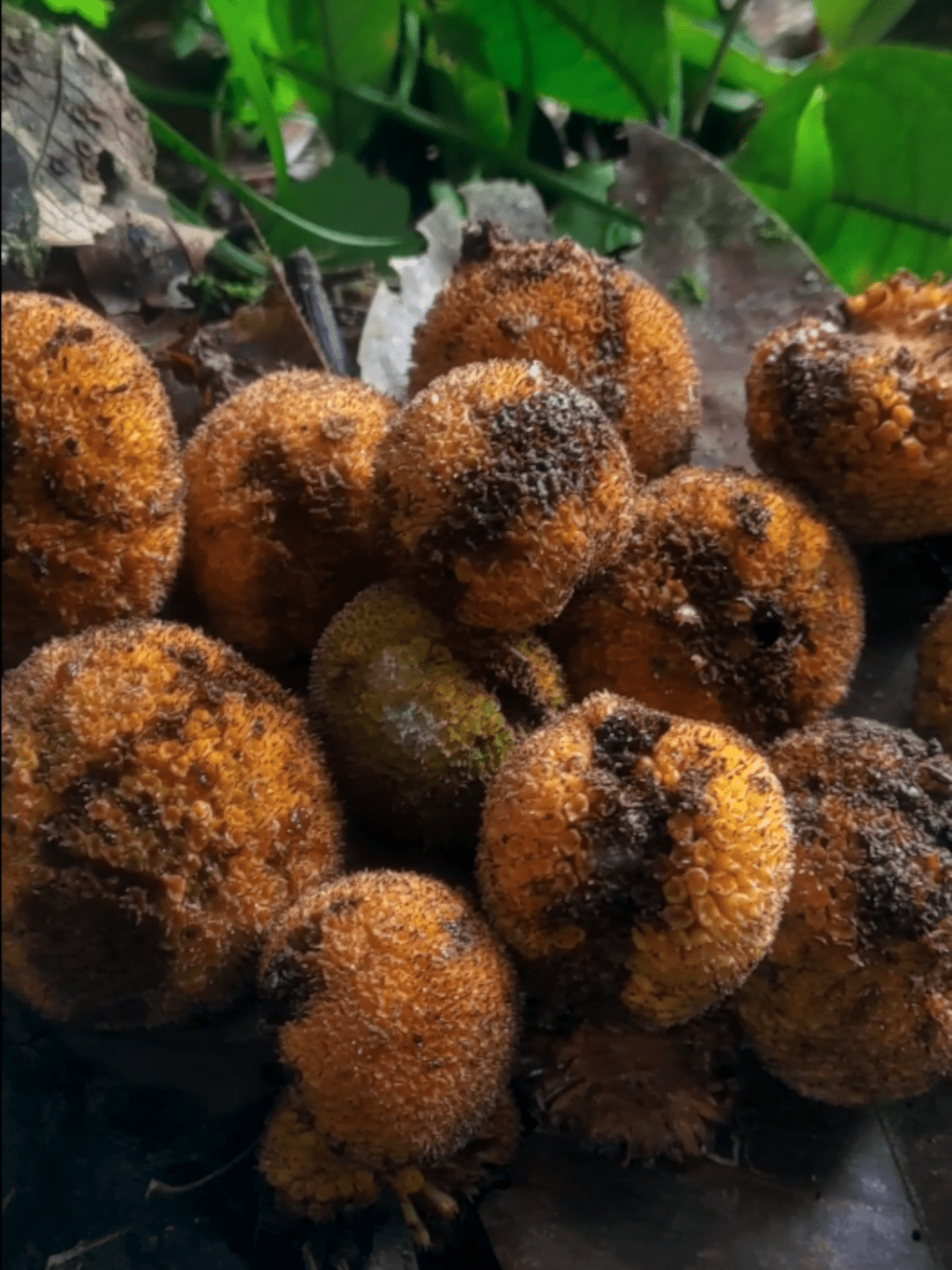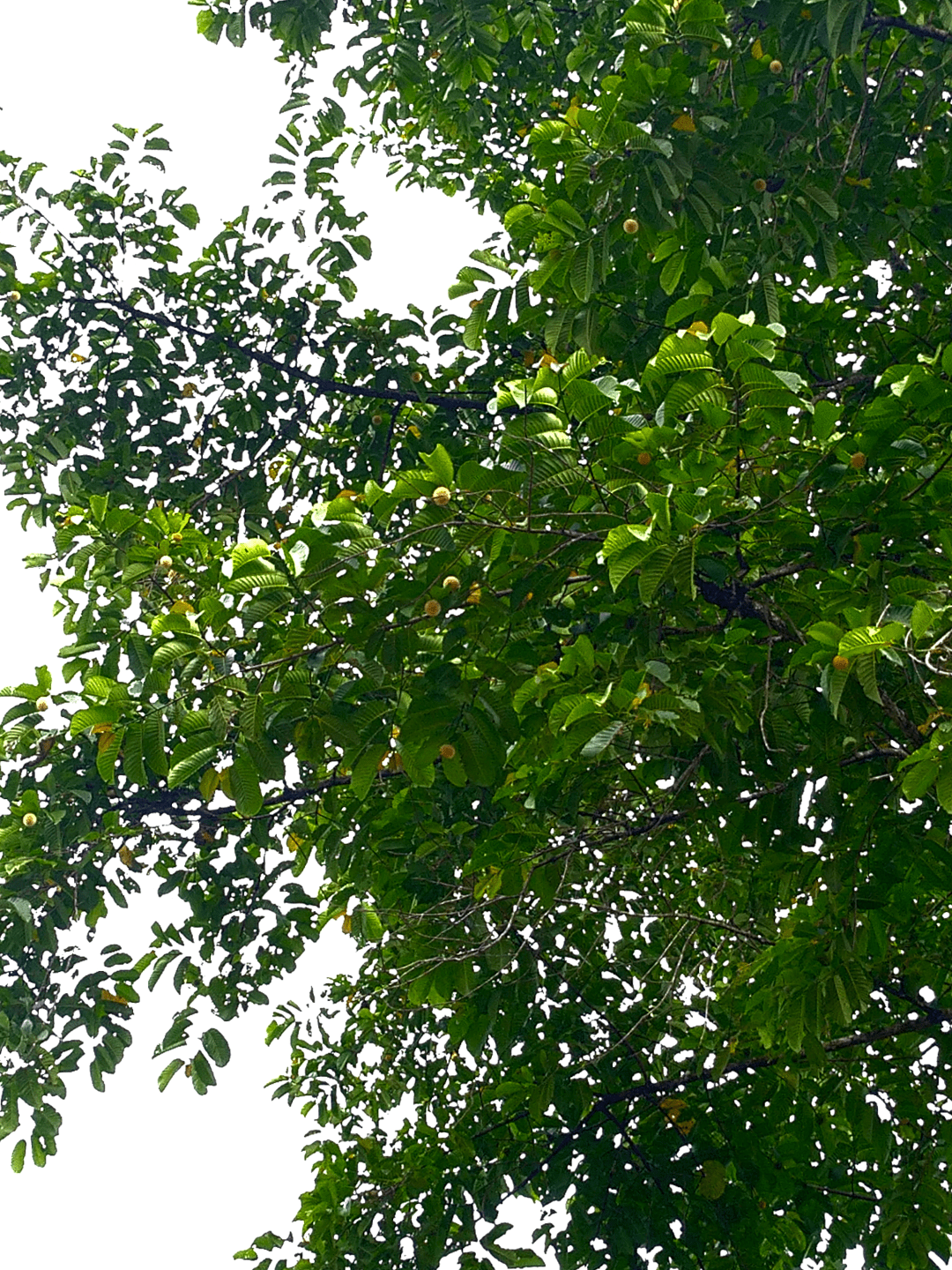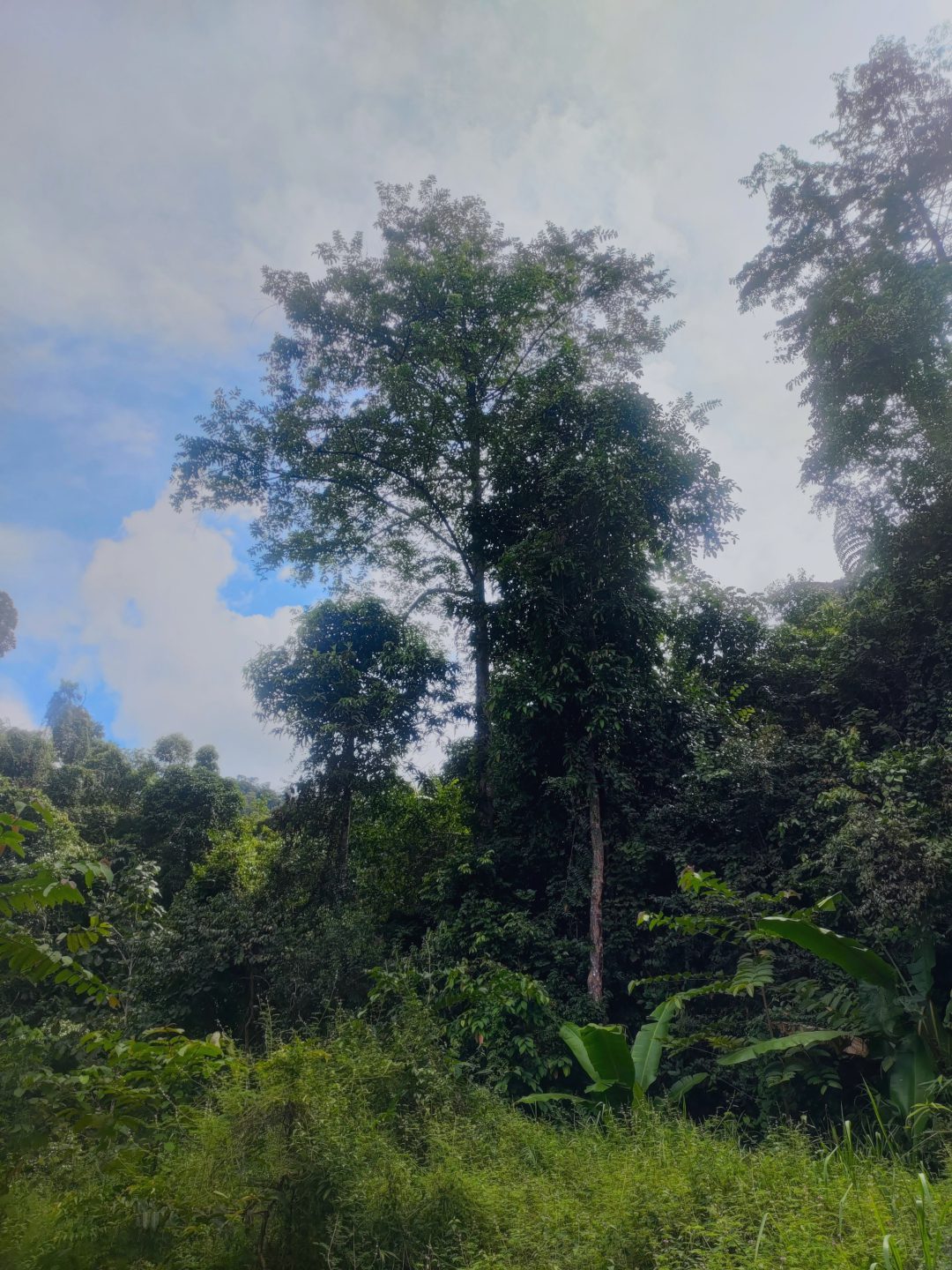Author: Enelra; Published Date: 28th February 2022
Her crown must be lush and a healthy green as it gracefully sways with the breeze.
Her body must be straight, free of ailments and deformities, as she stands proudly at the height of at least 20m. When it comes to size at the breast height, the bigger the diameter, the better. These are the primary “beauty standards” when selecting the white laran mother trees that secure the supply of seeds that will sprout and grow to become tree plantations throughout the future. The specific selection of these mother trees is vital because the seedlings generally inherit the physical traits of their parent trees. Therefore, we also need to evaluate other laran trees surrounding the mother tree to ensure that her potential paternal candidates may also pass down desirable traits.
So far, more than a dozen mother trees have been identified as ideal seed sources within the Sapulut area, and the list is expanding each year as there is a need to widen the genetic diversity of the seedlings and trees that are ultimately raised from the seeds. One of our most beautiful and productive mother trees can be seen on the roadside on route to the Forestry Complex as one is heading from the direction of Keningau. She stands almost 30 meters tall, produces high germinating seeds and bears the lucky number 8 on her stem.

The flowering season of white laran trees can vary depending on location. Still, in FMU 14, after a period of leaf shedding or senescence that gradually becomes noticeable beginning in the early months and throughout the middle of the year, tiny green globes will start to appear near the tips of branches which will develop into flowers with white filaments that mature into a mass of fruits between October to December. Before the fruits ripen from a yellowish-green to a yellowish-orange colour and drop to the ground, nets will be erected at the base of the mother trees to capture the fruits and prevent them from being devoured by wild boars, ground-dwelling insects, and pathogens. Fruit collection usually begins in September and may go on until mid-January.
Sapulut has recently coordinated with the Forest Research Center (FRC) in Sandakan to study and improve white laran seed extraction methods. Their mother trees at Sandakan have also been contributing to our seed sources. In the future, with the help of many associates such as the FRC and members of the Borneo Forest Cooperative (BFC), we hope to raise a tree stand consisting of white laran from multiple areas or progenies and convert them into a seed orchard that will become a starting point towards a tree improvement program for white laran.


